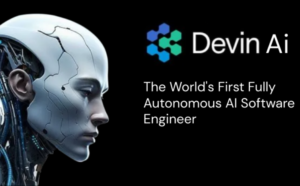The world of digital marketing has changed a lot because of artificial intelligence. Now, instead of doing everything manually, AI helps by quickly analyzing data and predicting trends. But AI tools do more than just that – they have some surprising features too. These tools are quietly changing how we think about the future of digital marketing. For professionals in this field, finding and using these unexpected tools can make a big difference in their success.
Table of Contents
Unexpected AI Tools
Digital marketers often rely on AI-powered tools for various tasks like creating content and scheduling social media posts. Yet, there are AI tools that surpass expectations and impress even the most knowledgeable marketers with their creativity and range of abilities.

Personalization through Sentiment Analysis
Sentiment analysis is not a groundbreaking concept, but when coupled with personalization algorithms, it transforms into a powerhouse for marketers. This tool can understand more than just what customers say directly. It can figure out how they really feel about a brand or campaign, even noticing small details. This helps marketers quickly make very specific changes to their messages that connect with each customer personally.
Visual Search Optimization
Visual search tools are not just reshaping e-commerce but are also making their mark in branding and SEO. These wonders of AI can do more than just identify pictures.; they understand context and intent, matching pictures with products, and more importantly, with potential buyers. For marketers, this means they can customize content and manage ads based on visuals instead of just words, which is a big deal.
Chatbot Storytelling
Companies using chatbots for customer service know they make interactions smoother. But some chatbot AI platforms do more than just give fast answers. They tell stories, creating personalized and changing stories based on how customers interact. This makes brands seem more human, connecting emotionally with customers in ways we didn’t think AI could.
Surprising AI tools in various industries
AI tools have advanced significantly in many industries, showing how versatile and innovative they are. In healthcare, AI helps doctors by analyzing medical images very accurately, which can help detect diseases early. Surprisingly, AI is also helping agriculture by using predictive analytics and automated farming to increase crop yield.
In finance, AI is changing how fraud is detected and how personalized banking services are offered to customers. Retailers use AI to give customers better experiences by recommending products based on their shopping habits. And in entertainment, AI helps suggest movies and shows people might like based on what they’ve watched before.
AI is also making a big difference in transportation by helping make self-driving cars safer and more efficient. And in cybersecurity, AI tools help find and stop cyberattacks to keep important information safe. The ways AI tools are used in different industries keep surprising us with how helpful they can be.
Impact on Digital Marketing Professionals
The rise of these unique AI tools sets higher standards for digital marketing experts, bringing many advantages but also introducing fresh hurdles to overcome.

Benefits of Using Unconventional AI Tools
The benefits range from deeper customer insights to more engaging customer experiences. Marketers can now achieve a level of personalization and insight into user behavior that was hard to achieve before, if not impossible. These tools give a competitive advantage, and those who use them early could gain a significant lead in the market.
Challenges and Considerations When Adopting New AI Technology
Learning how to use these tools can be difficult and requires a lot of effort to understand them fully and figure out the best ways to use them alongside current strategies. Marketers need to pay attention to the ethical issues of using AI, especially regarding user privacy and keeping data safe. Also, keeping these tools working well and dealing with any technical problems can be hard and is an ongoing challenge when adding them to the marketing process.
Personalization through Sentiment Analysis in E-commerce
An online retailer saw a 30% increase in conversions after integrating a sentiment analysis tool into their customer feedback system. The rise in satisfaction was credited to the tool’s capability to identify small issues and resolve them quickly, resulting in a better and more tailored shopping experience.
Visual Search Optimizations in Social Media Campaigns
A fashion brand used visual search optimization, letting users click on clothes worn by a celebrity in a social media post to buy the same or similar items. The interaction and conversion rates were much better than those from regular text searches.
Chatbot Storytelling in Brand Engagement
A leading tech company introduced a chatbot on their support page designed to chat with users and assist with tech-related jokes and anecdotes. The company experienced a 20% increase in positive brand mentions on social media, suggesting that this more relaxed and more human-like way the chatbot interacted really connected with their audience.
Future Trends in AI Tools
The AI system is still new, and there are many ways these tools could change in the future.
Predictions on How AI Tools Will Continue to Evolve
As AI algorithms become more advanced, the tools they run will also become more powerful. We can anticipate better predictive analytics that can predict what customers need very accurately. We’ll also see AI tools that make it easier to connect different marketing channels, creating smooth stories for brands across platforms.
Opportunities for Digital Marketers to Leverage Innovative AI Solutions
For those who are quick to try new things and come up with new ideas in digital marketing, there are lots of chances to use AI tools in ways that surprise and interest audiences. From making very personalized content strategies using AI to using AI in creative ways to design campaigns, there are many exciting possibilities.
Conclusion
In the ever-changing world of digital marketing, success depends on being adaptable and innovative. The AI tools we’ve explored are just a glimpse of what AI can do to change marketing. As we keep integrating AI, the message for professionals is clear: stay open to unexpected ideas and explore new ways of doing things. By embracing the full range of AI’s abilities, digital marketers can create a future that’s both dynamic and successful.
To stay ahead, always keep an eye on new AI tools, and test and use them with care and creativity. Marketers have the power to use AI to enhance their strategies and connect with customers in amazing ways. These surprising AI tools could be the key to the future of digital marketing.
FAQS
What makes AI tools surprising?
AI tools surprise us because they can do things we didn’t think machines could do. They often do tasks in new and unexpected ways.
Can you give examples of surprising AI tools?
Some surprising AI tools include chatbots that tell stories, tools that help you find clothes by looking at pictures, and AI that helps doctors find diseases early.
Why are these tools considered surprising?
They’re surprising because they go beyond what we thought AI could do. They solve problems in creative ways we didn’t expect.
How do surprising AI tools help industries?
They help industries by making things more efficient and accurate. For example, in healthcare, they help doctors diagnose diseases better, and in finance, they help catch fraud.
What problems do surprising AI tools face?
Some problems include making sure they don’t invade people’s privacy, keeping data safe, and making sure they keep working well over time.
How can businesses use surprising AI tools?
Businesses can use these tools by learning about them and figuring out where they can help. They need to think about how to use them in a way that’s helpful and doesn’t cause problems.




